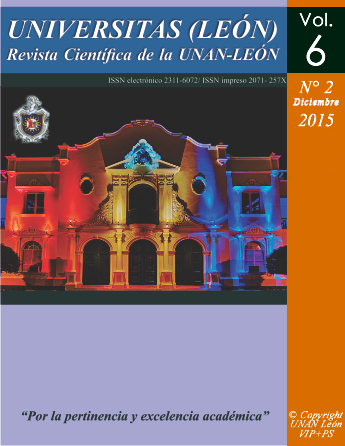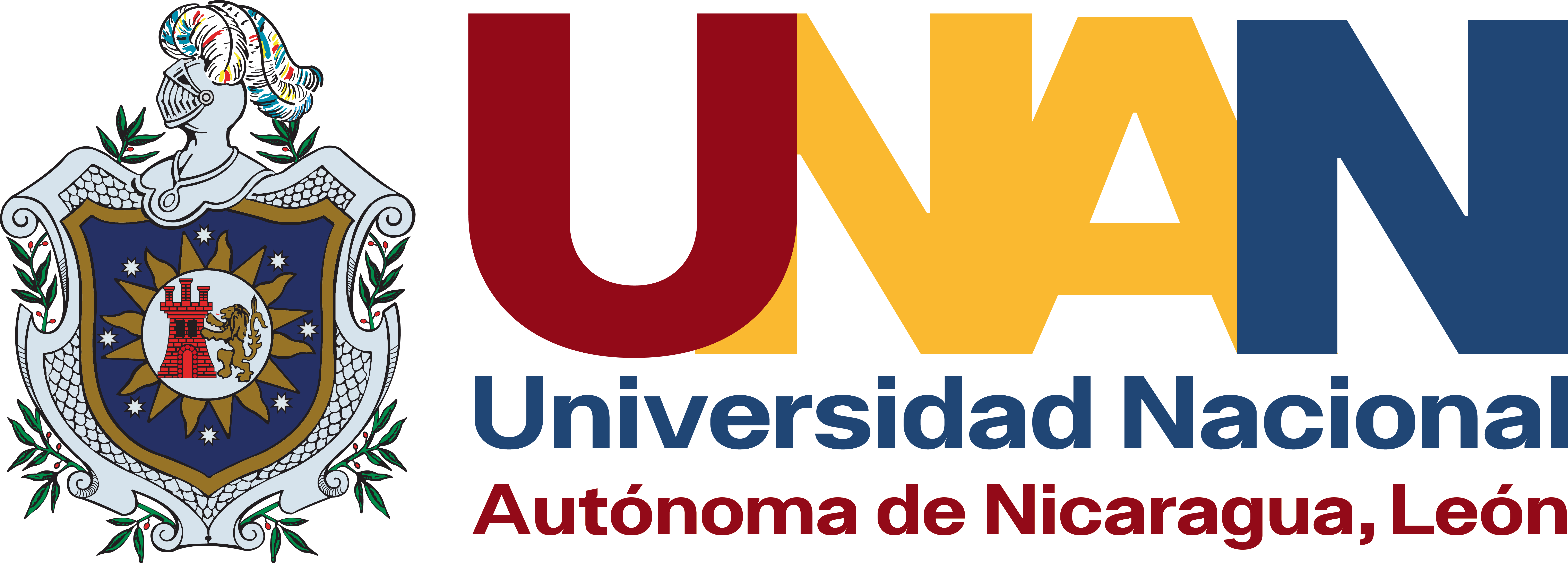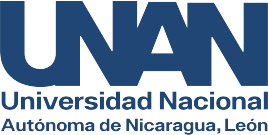Growth of juvenile shrimp Litopenaeus vannamei in waters fertilized with Ferti-Lake versus fertilizer experimental
DOI:
https://doi.org/10.5377/universitas.v6i2.13860Keywords:
Fertilizer, Intensive, PhytoplanktonAbstract
There is currently a worldwide trend towards greater consumption of fresh foods with a lower proportion of chemical adThe objective of this study was to evaluate the effect of fertilizing water with Ferti-Lake versus experimental fertilizer on the growth of early juvenile shrimp Litopenaeus vannamei for 35 days in 6 containers of 1.38 m2 with a planting density of 12 organisms / m2. As a result, mean temperatures of 32 ° C for Ferti-Lake and 32.5 ° C for the experimental were obtained. The pH with Ferti-Lake was 8.3 and 8 with the experimental, with a minimum of 6.8 for both treatments. Water salinity averaged 30.5% for both treatments. The visibility of the Secchi disk was between 21 cm and 86 cm with Ferti-Lake and between 25 cm and 83 cm in the experimental. The amount of phytoplankton was 165,000 cells / ml with Ferti-Lake and187,500 cells / ml in the experimental, predominating Chlorophytes and Diatoms. The average Cumulative Growth in both conditions was 0.29 g to 5.7 g. The Ferti-Lake fertilization rate was 0.33 g and 1.50 g and 0.26 g and 1.20 g experimental, 91% and 100% survival (Ferti-Lake /experimental). The Growth Rate from 10.74 g to -13.36 g in both conditions. The productive yield was 1371.01lb / ha and 1506.61lb / ha (Ferti-Lake / experimental). In both experimental conditions an F.C.A of 1.1 was obtained, Ferti-Lake fertilizer is recommended since the costs to use the experimental fertilizer are higher.
Downloads
References
Amaral, R., Rocha, I.P., Lira, G.P., (2003). Shrimp feeding and feed consumption: The Brazilian experience. En: Shrimp Special Session. Word Aquaculture Society Bahía.
Boyd, C.E. (1992). Shrimp pond bottom soil and sediment management, pp.166-181. In: J.A. Wyban, (ed.), Proceedings Special Session on Shrimp Farming. World Aquaculture Society, Baton Rouge, Louisiana, USA.
Boyd, C., (1995). Cemistry and efficacy of amendments used to treat Water and Soil Quality Imbalances n Shrimp Ponds.
Boyd C y Egna H, (1997). Dinámica de los estanques en acuicultura. Consultado en el sitio web: http://www.producciona nimal.com.ar/produccion_peces/piscicultura/05acuicultura_sagpya.pdf. Consultado el 6 de mayo de 2012.
Boyd, C. E. and C. S. Tucker. (1998). Pond Aquaculture Water Quality Management. Kluwer Academic Publishers, Boston, Massachusetts, USA. :700 . https://doi.org/10.1007/978-1-4615-5407-3
Boyd C. E. and A. Gross. (1998). Use of probiotics for improving soil and water quality in aquaculture ponds. pp101-106. In : T. W. Flegel (editor). Advances in Shrimp Biotechnology. The National Center for Genetic Engineering and Biotechnology, Bangkok, Thailand.
Boyd, C. E. (2000). Effluent composition and water quality standards. Global Aquaculture Advocate 3(5):61-66.
Clifford H.C. (1994). El manejo de los estanques camaroneros. Procceding of Seminario Internacional de Camaronicultura, Camarón 94. México.: 16-34.
Clifford, H.C. (2000). Personal communication. Henry Clifford is the International Technical Director of the Super Shrimp company.
Herrera C. y Martínez, E. (2009). Guía para el componente curricular Camaronicultura de la Carrera de Ingeniería Acuícola, UNAN León, Nicaragua.
Herrera C. (2012). Factores físicos y químicos del agua de los estanques camaroneros. UNAN León, Nicaragua.
Martínez-Córdova, A.L. (2008). Importancia de la alimentación artificial en el cultivo de camarón. En: C. Molina-Poveda y H. VillarealColmenares (eds.) Estrategias de alimentación en la etapa de engorde del camarón. CIBNOR, S.A., CYTED y PRONACA,:110.
Martínez, E, Lin F, (1994). Manual para el cultivo de camarones marinos del genero Litopenaeus. Autoridad Noriega para el desarrollo internacional (NORAD). UNAN-León,: 24-34.
Martínez E. (2009). Informe final. Programa desarrollo institucional (ASDI/SAREC), Proyecto de desarrollo de la investigación para Académicos con M.Sc y PhD.
Martínez, E. (2012). Crecimiento y Desarrollo. Carrera de ingeniería Acuícola, UNAN León, Nicaragua.
Martínez E. y Zapata B. (1997). Aprovechamiento del alimento natural para el engorde del camarón o importancia del control y análisis de los parámetros. IV Encuentro Nacional de Productores de Camarones de Cultivos El viejo Chinandega. : 29-46.
Primavera, H. A., (1993). Critical review of shrimp pond culture in the Philippines. Review in Fisheries Science 1: 151-201. https://doi.org/10.1080/10641269309388539
Downloads
Published
How to Cite
Issue
Section
License
Copyright (c) 2015 National Autonomous University of Nicaragua, Leòn

This work is licensed under a Creative Commons Attribution-NonCommercial-ShareAlike 4.0 International License.
Copyright © 2025 Universitas (León), Revista Cientifíca de la UNAN-León. Academic Direction. Research Department. Publication and Scientific Event Unit.










